2021 Toyota Prius Prime Review: Easy to Live With, Hard to Love

FAST FACTS
| Engine: | 1.8L I4 w/ 2 electric motors |
| Output: | 121 hp, 105 lb-ft |
| Transmission: | CVT, FWD |
| US fuel economy (MPG/MPGe): | 54/133 |
| CAN fuel economy (L/100KM/Le/100KM): | 4.3/1.8 |
| Starting Price (USD): | $29,245 (inc. dest.) |
| As-Tested Price (USD): | $35,025 (inc. dest.) |
| Starting Price (CAD): | $35,340 (inc. dest.) |
| As-Tested Price (CAD): | $40,490 (inc. dest.) |
Over 20 years since it debuted, the Prius remains the hybrid car poster child.
Of course, the number of hybrid options in the marketplace has ballooned since the Prius dropped in North America in late 2000. Even Toyota’s own lineup is legion: the Corolla, Camry, Avalon, RAV4, Highlander, Venza, and Sienna all come with a battery assist now. The latter two are even hybrid-only. As tastes have changed, Toyota’s original hybrid is no longer the brand’s sales champ.
But a surprising change happened this year. The Prius Prime, the plug-in option in the family, has been accounting for nearly half of all 2021 Prius sales so far. With the promise of 25 miles (40 km) of gas-free driving and the same smooth driving dynamics as the regular Prius, it’s easy to see the appeal. Spending a week with the 2021 Prius Prime confirmed as much, too—but also highlighted a few of the compromises that come with the plug.
What’s new?
The Prius Prime debuted back in 2017, giving a new name to the plug-in option. For 2021, Toyota has updated the package with standard Toyota Safety Sense 2.0, its suite of driver assists. We’re talking automated emergency braking with pedestrian and cyclist detection, lane departure alert, lane-trace assist, auto high beams, road sign assist, and full-speed dynamic cruise control. You’ll have to graduate to the top trim (Limited in the US, Upgrade with Technology Package in Canada) for blind-spot monitoring, however. This tester is just so equipped, which also adds in a 10-speaker JBL sound system, rain-sensing wipers, a head-up display, and parking sensors.
Get a Quote on a New Toyota Prius PrimeToyota hasn’t fiddled much with those unique looks. The Prime interior had a slight rethink last year, growing from a four- to a five-seater. A pair of USB ports give rear-seat passengers somewhere to charge, too. Toyota has ditched the high-gloss white interior trim bits, which could highlight any bit of dirt that showed up inside the Prime. Unfortunately, it’s all gloss black now, so fingerprints and various smudges are on the menu instead.
Rounding out the updates for 2021 is standard Android Auto support for standard 7.0-inch infotainment screen. It’s also included on the optional 11.6-inch touchscreen found here, in addition to standard Apple CarPlay and Amazon Alexa support.
Still the efficiency champ
A huge part of the appeal of the Prius, Prime or otherwise, is that Toyota has had more time than anyone to refine the package. It’s sold over six million, after all. The Prime is silent on start-up, and with a full charge, it stays that way for very slightly more than its quoted 25-mile (40-kilometer) EV-only range. The distance included a bit of highway driving too, where the remaining range estimate drops quicker than a Supra’s 0–60 time.
Surfing around the city, the Prius is in its element. Visibility out front and to the sides is excellent; only the odd, cartoon-lips shape of the rear lights impinge on the view out back. The larger lithium-ion battery means you can really lean on the throttle without waking the gas engine, too. Acceleration never surpasses “leisurely” though, since the switch to plug-in power adds a couple hundred pounds to the curb weight. It’s most noticeable on the highway, where the Prius will get quite noisy as the CVT milks the 1.8-liter for every one of its 96 horsepower (combined system output is 121 hp).
Since it sits on reasonably-sized rubber, the Prius Prime provides a cushy, comfortable ride. The steering is ultra-light, of course, but it’s accurate and consistent.
Like many other battery-assisted vehicles out there, the Prius Prime uses regenerative braking to make the most of its electrified range. The switchover between it and friction braking is pretty seamless, to the point I recommend knocking the stubby drive selector to “B” and maximizing the regen. Even here, deceleration is no more aggressive than many ICE cars using engine braking.
SEE ALSO: 2020 Toyota Corolla Hybrid ReviewWithout a home charger, I elected to drive the Prime just like a regular hybrid. Including its EV-only run at the start of the week—where it lasted a single kilometer more than the quote—the Prime averaged 64 mpg (3.7 L/100 km). I spent a little over $10 to top it back up; Toyota quotes a huge 640-mile (1,035-km) range. Naturally, if you charge at home—under six hours on a 120-volt setup, half that on a 240-volt outlet—you could go weeks without using a full tank. It’s that versatility that earns the Prime big points.
Screen woes
It isn’t all smiling-Earth goodness inside the Prius, though. I’m no big fan of Toyota’s Entune infotainment system, but the upgraded 11.6-inch portrait-orientation screen present here had me wishing for the stock setup. By default, most of the real estate is dedicated to the dated navigation visuals, which don’t jive well with the future-is-now feel the Prius emanates. Worse yet, the climate controls are relegated to the bottom left corner. A small, fiddly touch-capacitive temperature control setup beside the screen doesn’t really help.
Compounding matters, the screen is very susceptible to glare. At certain times of day I could barely make out anything on it. If Toyota wants to include big screens a la Tesla, it needs to make sure they’re usable.
There’s a lot of interesting information to geek out over on the 4.2-inch central display. Seeing how the electrons are flowing around the system is always cool, and the gamification of acceleration and braking is welcome. I’m pretty sure having to keep a diagram of the shifter on screen proves it’s not an intuitive setup, though: that little nub never quite feels natural. The head-up display is very useful, however.
Big screen and too much gloss black aside, the Prius Prime interior is a spacious, stress-free place to watch the miles melt away. The SofTex-clad seats are comfortable and supportive, and there’s enough front head- and legroom to challenge some crossovers. The rear row is pretty spacious as well, though it might be a squeeze three-wide.
SEE ALSO: Kia Carnival vs Chrysler Pacifica vs Toyota Sienna ComparisonThe other Prime-exclusive drawback is storage space, or a relative lack thereof. The raised load floor means there’s just 19.8 cubic feet (560 liters) of storage space behind the rear seats, down from 27.4 cubes (776 L) in the series-hybrid model. You’ll need to take extra care loading larger items.
What’s the competition?
The most direct competition is the Hyundai Ioniq plug-in hybrid. The Ioniq was an obvious shot at the Prius when it debuted, coming in series and plug-in hybrid flavors, as well as an all-electric version. The PHEV boasts a little more power (139 hp combined), slightly worse average fuel economy (52 mpg vs 54 mpg) and longer EV-only range (29 miles / 47 km). Prices start from $27,705 ($34,374 CAD) and run to $34,155 ($39,974 CAD). It’s important to note the Ioniq PHEV is only available in 11 states currently, however.
SEE ALSO: 2020 Hyundai Ioniq Electric Review: It’s Okay To Blend InThe Prius Prime runs slightly richer across the board. Pricing begins at $29,245 for the LE ($35,340 CAD, called Standard Package). This loaded Canadian-spec Upgrade with Technology Package (simply Limited in the US) retails for $40,490 CAD ($35,025 US).
Both the Ioniq and Prius Prime qualify for around $4,500 in US federal tax credits at the time of writing. State and provincial rebates vary.
Plug-in options are thin on the ground at this price point. Toyota’s own RAV4 Prime starts for a few grand more, but you’ll want the more expensive trims to match the equipment levels here. A Camry XSE hybrid—not a plug-in—comes in for slightly less than the Prius, with more power and interior room.
SEE ALSO: 2021 Toyota RAV4 Prime First Drive Review: Plug-In PowerConsidering a full EV? The Nissan Leaf and Chevrolet Bolt are the closest competitors. For something left field, check out the short-range Mini SE.
Verdict: 2021 Toyota Prius Prime Review
The 2021 Toyota Prius Prime remains an excellent choice for those not yet ready to take the plunge on a full-electric vehicle. Charged on a regular basis at home, it can handle most short-burst errands without ever waking that ultra-efficient gas engine. I didn’t do that, and even then it was the most fuel-efficient gasoline-powered car I’ve driven all year.
There are trade-offs, however. The Prime is tardy due to the extra 300 lb (136 kg) or so of added plug-in bits. The larger battery eats into storage space, too—one of the primary benefits a notchback like the Prius has over a Corolla or Camry. While the TNGA platform can be an able performer, the are no thrills to be had here. If low running costs and a comfort-oriented ride are what you’re after, however, the Prius Prime is a strong candidate at a price that won’t break the bank.
Become an AutoGuide insider. Get the latest from the automotive world first by subscribing to our newsletter here.
LOVE IT
- Useful EV range in the city
- Comfortable ride
- Airy interior
LEAVE IT
- Touchscreen is unintuitive, washes out in sunlight
- Cargo space suffers on Prime
- Those looks

Kyle began his automotive obsession before he even started school, courtesy of a remote control Porsche and various LEGO sets. He later studied advertising and graphic design at Humber College, which led him to writing about cars (both real and digital). He is now a proud member of the Automobile Journalists Association of Canada (AJAC), where he was the Journalist of the Year runner-up for 2021.
More by Kyle Patrick



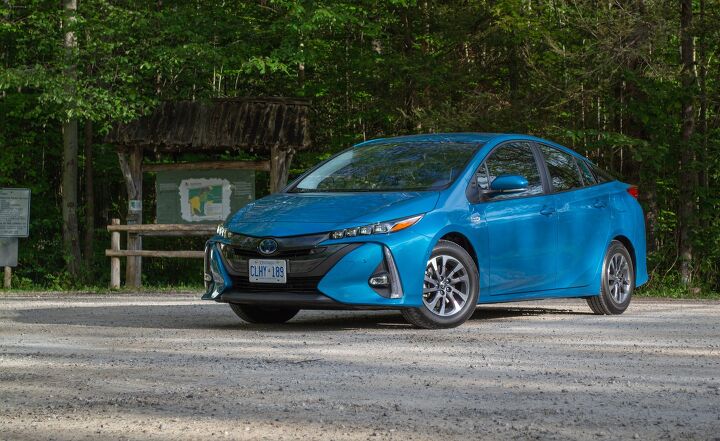
























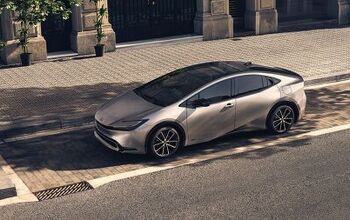


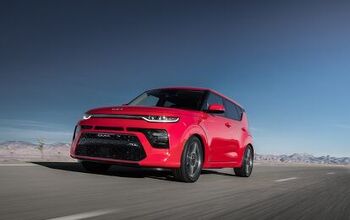



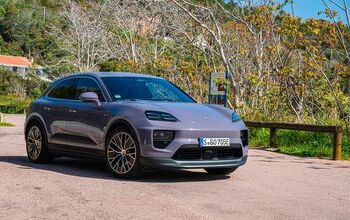
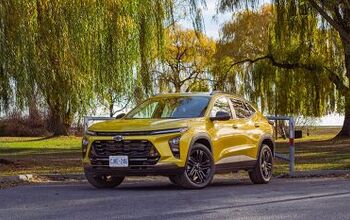


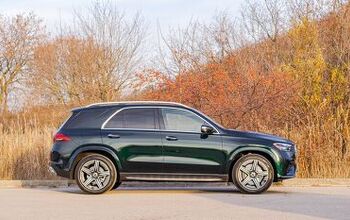
Comments
Join the conversation
I've seen several lineup's featuring solar charging for added E-range and charging while at work, shopping, ect. And I read that Toyota was incorporating this into it's options. But so far have not seen any available from the major manufacturers. Is this and option or immediate future option? I see it available on many new start-ups as solar ev plug-ins.
I've owned a prius since 2009. That one died last year in am accident with the original batteries, go $10,000 from insurance... 0I now have a 2021 Prime Plugin and bought my son a used 2018 Prime plug-in. Have used less 50 gallons of gas in 10,000 miles on the 2021. What gas problem? Although not an EV, I'm doing my part for climate change. Prius rules and it looks just fine to me. Agree on the displays but you can adjust temperature on the steering wheel